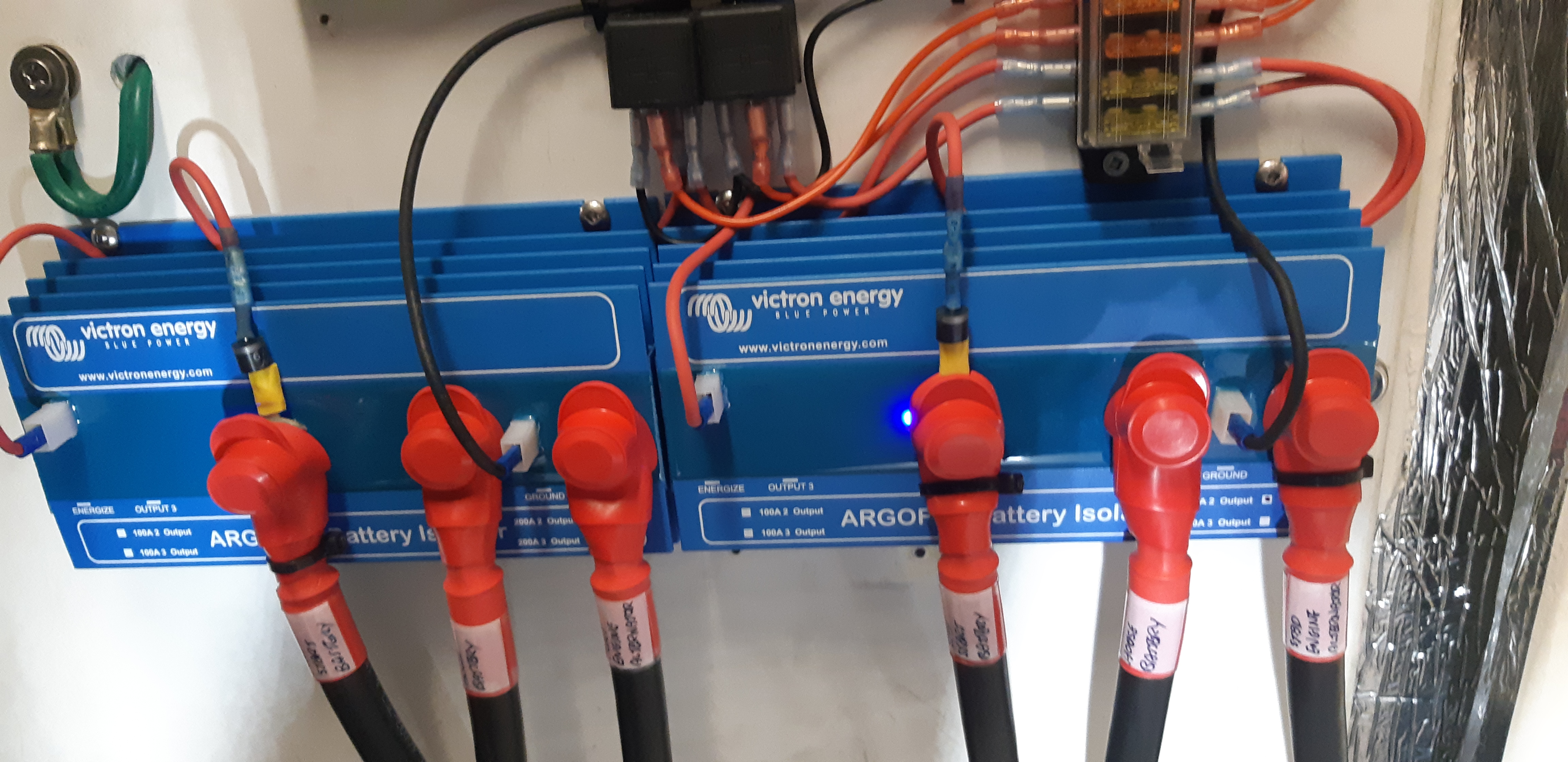Hi,
I am having an issue with some Argofets blowing 10A fuses inline with the energize inputs.
-The energize input is wired to the switched side of the starter battery isolator via 10A blade fuse.
-The alternator B+ is connected to the argofet input.
-Start battery is connected to the argofet output 1
-House battery is connected to the argofet output 2.
When the start battery isolator is on, engine not running, a current drain/load on the house bank, the energize input is supplying current to the house bank, and blowing the 10A fuse. This current path is presumably from the energize input to the input and back to the output with the lower battery voltage.
Is this expected/normal, or may i have a hardware fault?
If this were normal, should everyone be installing a 25A fuse to allow for the 20A maximum mentioned in another thread?
Thankyou,
Harley

